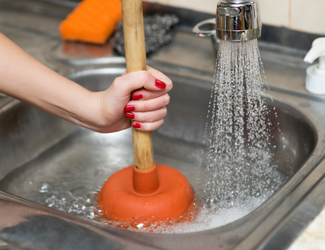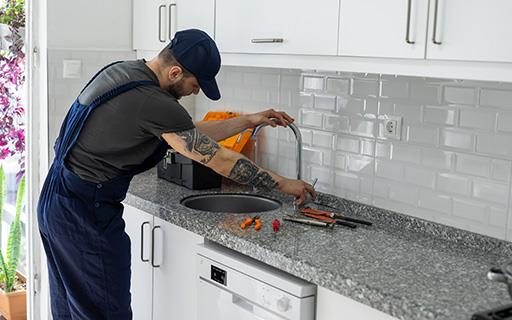Landlord's Guide to Plumbing Maintenance in Rental Homes
Landlord's Guide to Plumbing Maintenance in Rental Homes
Blog Article
They are making several good points relating to Plumbing Maintenance Guide for Tenants overall in this article directly below.

Managing pipes issues in rental properties successfully is vital for maintaining occupant satisfaction and preserving the building's worth. Whether you're a property owner or a residential property manager, understanding just how to address these common issues can conserve you time and money while making sure compliance with lawful obligations. Right here's a detailed guide on how to take care of pipes issues in rental homes.
Establish Clear Communication
Motivate occupants to report any kind of pipes concerns as soon as they occur. Provide multiple communication channels such as phone, email, or a renter portal to make it simple for them to reach out. Trigger reactions to these reports can avoid minor issues from rising right into major troubles.
Inform Renters
Educate your tenants about what constitutes a plumbing emergency situation and what does not. Give standards on exactly how to manage minor problems themselves, such as utilizing a plunger to unclog a commode. Likewise, educate them about what they must stay clear of putting down drains to prevent obstructions, such as oil, coffee premises, and non-biodegradable items.
Regular Upkeep
Execute a routine maintenance routine for all plumbing systems in your service buildings. Regular checks can aid determine and deal with concerns like leakages, sluggish drains pipes, or rusty pipes prior to they become significant. Consider working with an expert plumbing to inspect the buildings annually or semi-annually.
Quick Action to Emergency Situations
Have a plan in place for replying to plumbing emergencies. This ought to consist of having the contact info of reliable pipes services that supply 24/7 emergency repair work. Quick activity is vital to minimize damages in situations like ruptured pipelines or severe leaks.
Paper Every little thing
Maintain thorough records of all reported plumbing problems and the activities required to resolve them. Documentation needs to consist of dates, descriptions of the issue, interaction with occupants, and receipts from contractors or plumbers. This information can be vital for insurance claims, tax reductions, and lawful defense.
Use Qualified Professionals
Always utilize qualified and insured specialists for significant pipes fixings and installments. This makes sure that the job is up to code and can help avoid liability issues in case of crashes or additional damages. It additionally reassures renters that fixings are being handled expertly.
Understand Legal Duties
Recognize your legal responsibilities relating to pipes and general building upkeep. The majority of territories call for landlords to ensure their homes are habitable which all plumbing systems are in good working order. Failure to attend to severe problems immediately can bring about lawsuits from lessees.
Lessee Reimbursements
If a pipes concern calls for prompt focus and the lessee resolves the issue on their own, have a clear plan in position for compensating prices. Make sure occupants understand they must acquire previous authorization for higher-cost repair services unless it's an absolute emergency.
Preventive Upgrades
Consider upgrading older pipes systems and components to much more contemporary, efficient models. This can lower the regularity and intensity of plumbing concerns and reduced long-lasting maintenance prices. It's additionally a marketing point for prospective tenants who value upgrades and contemporary attributes.
Occupant Move-Out Inspections
Conduct extensive plumbing checks throughout move-out assessments to guarantee that any concerns are determined and addressed prior to a new tenant relocate. This avoids conflicts with new lessees over pre-existing conditions and ensures the property remains in top problem.
Conclusion
Taking care of plumbing concerns in rental buildings needs an aggressive method and great communication with tenants. By remaining on top of upkeep, reacting immediately to emergencies, and using qualified specialists, proprietors can maintain their homes in outstanding problem and preserve good connections with lessees.
How to Handle Water Damage in a Rental Property
What is Water Damage?
Water damage is harm or destruction caused by water entering areas where it is not supposed to be. It can be caused by a variety of sources and can manifest in different ways. The most common examples of water damage include:
Leaking roof Plumbing leaks Appliance malfunctions Poor drainage Flooding Sewage backup Condensation Tenant negligence HVAC system issues Frozen pipes Is water damage dangerous?
Water damage itself is not inherently dangerous, but it can lead to various hazards and health risks if not promptly and properly addressed. The severity of these risks depends on the extent of the water damage, the source of the water, and how quickly it is mitigated.
Some potential dangers associated with water damage include structural damage, mold and bacterial growth, electrical hazards, water contamination, and pest infestations. In situations where mold and mildew have gone unaddressed, mold can start to develop within 24-48 hours of water exposure, and this can impose a serious health risk to tenants. In particular, mold spores and damp conditions can lead to respiratory issues and even make existing health problems worse, such as allergies, asthma, or immune disorders.
Water Damage in an Apartment - Who is Responsible?
If the water damage is caused by the tenant’s negligence, the tenant is responsible for the cost of repairs. If the water damage is caused by a defect in the property, the landlord is responsible for the cost of repairs. If the water damage is a result of natural causes, such as excessive rain, then the landlord is responsible, since the water intrusion likely occurred due to a defect in the property. Landlord Responsibility water damage in rental property
Since maintaining habitability is the landlord’s legal responsibility, landlords are responsible for any resulting structural damage caused by water damage. These structural damages may include damage to walls, roofs, ceilings, and flooring. If water damage has affected the rental property’s original structure, the landlord is responsible for repairing or replacing those materials. Therefore, landlords should have property insurance that covers the structural components of their rental property so that they can receive help with the costs of covered events.
Preventative measures can also help landlords avoid massive renovations. Preventative maintenance may include conducting regular inspections to identify and address potential water damage before it becomes a major and urgent problem.
If a landlord fails to meet their responsibilities regarding water damage, it can lead to legal disputes and potential liability. Tenants who believe their landlord is not addressing water damage issues in accordance with California law can seek legal advice or contact local housing authorities for assistance.
https://www.goodlifemgmt.com/blog/water-damage-in-a-rental-property/

I discovered that post on Who is responsible for plumbing maintenance when browsing the search engines. If you please take the opportunity to share this blog entry if you liked it. Thank-you for your time invested reading it.
Report this page